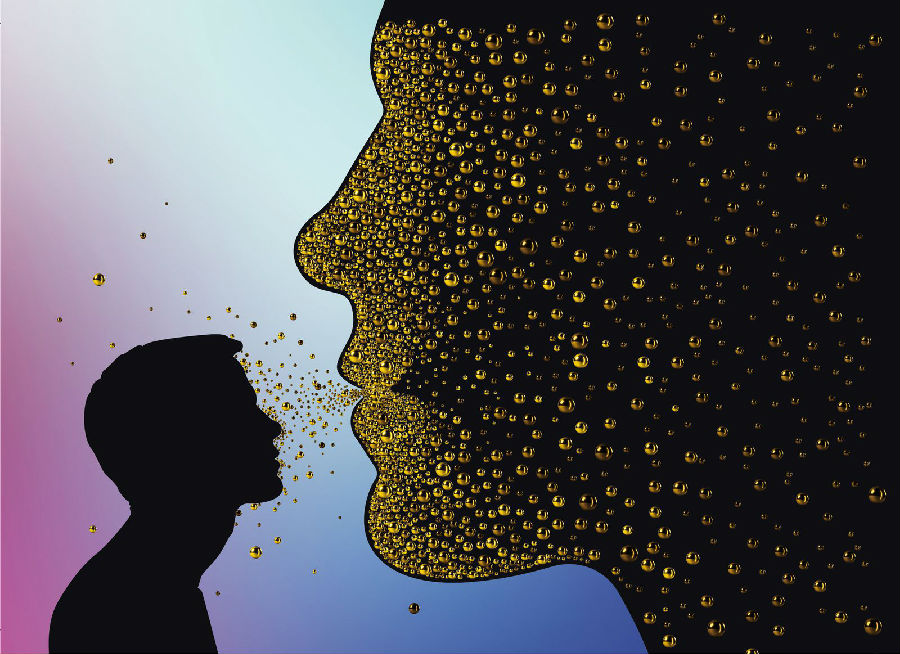The pioneers of this evolution are computer-aided design (CAD) companies like Adobe and Autodesk,
這種演變的先鋒是電腦輔助設(shè)計(jì)(CAD)公司,如Adobe和Autodesk,
as well as tech giants such as Google, IBM, and Microsoft. In 2016, Adobe launched a program called Adobe Sensei,
以及科技巨頭,如谷歌、IBM和微軟。2016年,Adobe推出Adobe Sensei程序,
a machine-learning network that powers its Creative Cloud software and many of its other platforms.
一款為其Creative Cloud軟件和許多其他平臺(tái)助力的機(jī)器學(xué)習(xí)網(wǎng)絡(luò)。
Designers who work with Adobe have started using Sensei tools like image matching
使用Adobe工作的設(shè)計(jì)師已經(jīng)開始利用Sensei的工具了,比如圖片匹配
and readings of customer data in order to hone their own ideas.
和客戶數(shù)據(jù)讀取,以精化自己的想法。
Last fall, the company introduced Intelligent Alerts,
去年秋天,該公司引入Intelligent Alerts,
which metaphorically peers over designers' shoulders to recommend relevant data sets they might not otherwise have considered.
這就好比是設(shè)計(jì)師身邊的同行向他們推薦他們可能沒(méi)有考慮過(guò)的相關(guān)數(shù)據(jù)集。
Similarly, in 2017, Autodesk--the firm that kick-started the automation of design tools in the 1980s and '90s with AutoCAD--
同樣,在2017年,Autodesk——在20世紀(jì)80年代和90年代,用AutoCAD開啟設(shè)計(jì)工具自動(dòng)化的公司——
announced its first commercial "generative design" product, Project Dreamcatcher.
公布了其首個(gè)商業(yè)“生成設(shè)計(jì)”產(chǎn)品,Project Dreamcatcher。
Designers use Dreamcatcher to test more design options more quickly:
設(shè)計(jì)師使用Dreamcatcher更快速地測(cè)試更多設(shè)計(jì)方案:
The program generates possibilities based on user inputs about objectives, materials, cost restrictions, manufacturing methods, and so on.
這款程序根據(jù)用戶輸入的目標(biāo)、材料、成本限制、制造方法等信息生成各種可能的方案。

One early Dreamcatcher use case: General Motors is developing auto parts with these tools,
一位早期Dreamcatcher用戶案例:通用汽車公司正在用這些工具開發(fā)汽車零部件,
which it says are helping it build both lighter and stronger pieces.
其表示這有助于制造更輕更強(qiáng)的零件。
Trades like furniture-making, architecture, and fashion are experimenting with these new tools and considering their industry-shifting potential.
像家具制造、建筑和時(shí)尚這樣的行業(yè)正在測(cè)試這些新工具,并在考慮他們行業(yè)轉(zhuǎn)變的潛能。
Two playful furniture-making exercises using A.I.--one by Radical Norms, a Toronto research company, implementing a Google-powered platform;
兩項(xiàng)使用人工智能進(jìn)行家具制造的有趣練習(xí)——一個(gè)是實(shí)行谷歌平臺(tái)的多倫多研究公司Radical Norms發(fā)起的;
another by designers Philipp Schmitt and Steffen Weiss that put 562 Pinterest photos of 20th-century chairs into a neural network--
另一個(gè)是由設(shè)計(jì)師Philipp Schmitt和Steffen Weiss發(fā)起的,他們將562張Pinterest上20世紀(jì)椅子的照片放入一個(gè)神經(jīng)網(wǎng)絡(luò)中——
have generated furniture that would look more at home in a contemporary art gallery than on your veranda.
所生成的家具更適合放在當(dāng)代藝術(shù)畫廊里,而不是你家的陽(yáng)臺(tái)上。
But they point toward a future when A.I. could become an industry standard,
但它們指向著這樣一個(gè)未來(lái):人工智能可以成為一個(gè)行業(yè)標(biāo)準(zhǔn),
allowing for hyper-personalized products with body-fitting designs
允許超個(gè)性化的貼身設(shè)計(jì)產(chǎn)品
and customized colors and patterns while also saving significant time and money.
以及定制色彩和圖案,同時(shí)也節(jié)省了大量的時(shí)間和金錢。
In fashion, the Italian e-commerce platform Yoox has been among the first to introduce an A.I.-led line, the private label 8 by Yoox.
在時(shí)尚界,意大利電商平臺(tái)Yoox是首家引入人工智能生產(chǎn)線(Yoox的私營(yíng)品牌8)的公司之一。
The collection was created by compiling content from across social media and the Internet,
該品牌線是通過(guò)收集社交媒體和互聯(lián)網(wǎng)上的內(nèi)容,
focusing on key markets, and reviewing data about trends, products sold, and customer feedback.
關(guān)注主要市場(chǎng),并回顧有關(guān)潮流趨勢(shì)、產(chǎn)品銷售以及客戶反饋的信息來(lái)生產(chǎn)產(chǎn)品的。
The resulting men's and women's collections are unsurprising "essentials" that look sort of stylish without veering toward the outre--
毫不意外,由此生產(chǎn)出的男裝和女裝系列都是看起來(lái)既時(shí)尚又不怪異的“必備款”——
the outcome you might expect from designs that reflect an aggregated analysis of preferences rather than an individual artist's flair.
這樣的設(shè)計(jì)結(jié)果反映的是對(duì)偏好的綜合分析,而不是單個(gè)藝術(shù)家的天賦。
譯文由可可原創(chuàng),僅供學(xué)習(xí)交流使用,未經(jīng)許可請(qǐng)勿轉(zhuǎn)載。












